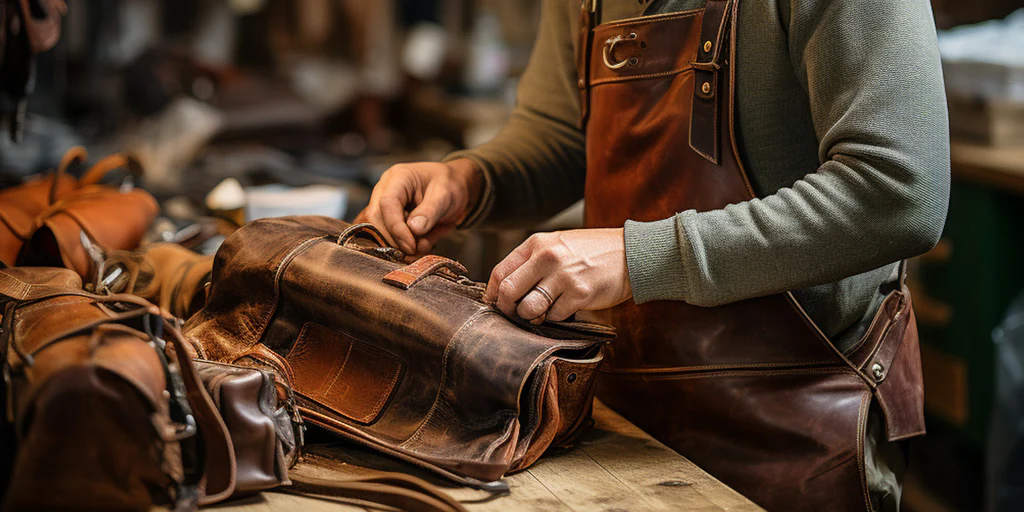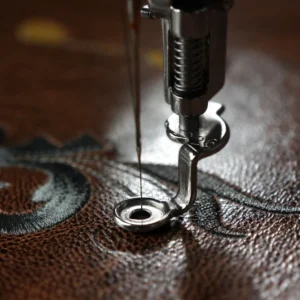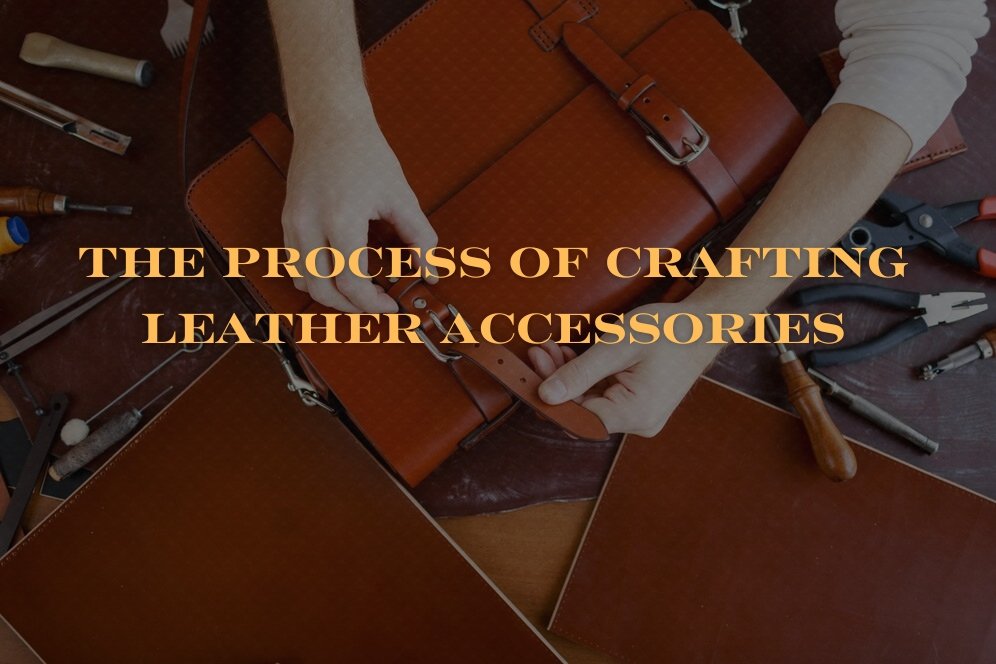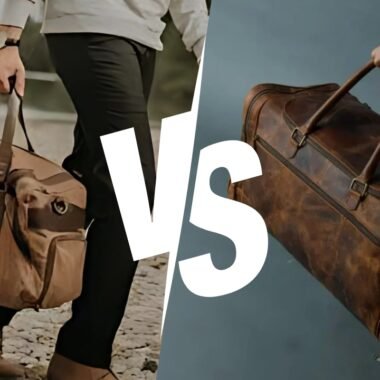People treasure leather craftsmanship as an ancient artistic tradition because the material possesses attractive qualities and great toughness and distinctive personality. The process of crafting leather accessories showcases the skill of artisans who pour their deep passion into creating items that can last multiple lifetimes, such as durable duffel bags and classic leather hats. The blog provides an overview from start to finish about leather accessory manufacturing while explaining which materials artisans select and the final finishing steps for complete completion. Customers who seek handcrafted leather backpacks and leather cowboy hats together with leather gloves will develop full awareness about the professional techniques master craftsmen employ in their production.
1. Introduction
Culture has embraced leather throughout the centuries since it represents a material that combines supreme durability and luxury. The enchanting aspect of leather consists of its decadent texture in addition to its ageless class. This versatile material accepts any kind of shape, which enables craftsmen to create both fashionable leather caps and handsome duffle bags and sturdy leather backpacks. The items represent their creators’ mastery in workmanship along with deep dedication and technical talent.
Artisans demonstrate their mastery through their production of leather cowboy hats and their elegant leather gloves. These items have enduring qualities because each piece develops personality and age marks as it ages. This article details the complete handmade leather accessory creation process, including artisan material selection and design creation and perfect accessory production techniques.
2. Selecting the Leather

Leather accessory making starts when the producer selects their leather material. The raw material used in leather production consists of animal hides, which provide distinctive traits across their varieties. The three primary leather categories consist of full-grain, followed by top-grain, along with genuine leather, which display different surface quality, lasting power, and visual presentation.
- Top-Grain Leather: is a refined leather product after full-grain since its top-hide origin requires sanding or treatment to eliminate natural defects. Full-grain leather contains most of its natural beauty but provides less durability than its variant. The manufacturing process of leather hats and gloves frequently uses top-grain leather because this skin type provides suitable durability alongside pliability.
- Genuine leather originates from hide scraps, which form the lowest leather quality grade. Genuine leather offers a lower price point, but it provides lower durability and end results in less attractive visuals than full-grain or top-grain leather.
- Suede leather results from processing the underside of leather hides into soft, velvety materials. Suede serves as the material of choice for accessories that need a flexible structure because it finds use in leather gloves and hats while also working sometimes for leather backpacks. Suede possesses distinctive visual characteristics through its supple texture, which suits creations that show off fashion style by combining elegance with comfort. Suede provides a delicate touch since it confronts higher risks of water damage and staining, which needs special maintenance to keep its original state.
People need to choose between different leather types according to what purpose a leather backpack or leather cowboy hat will serve. Durable duffle bags require resilient leather materials, whereas leather caps typically need flexible leather that ensures proper fit.
The sustainable and ethical procurement methods of leather during manufacturing have become important considerations for the market. The contemporary artisan values sustainable tannery leather sources that adopt vegetable tanning processes in combination with labor standards that ensure worker fairness. The consideration includes both environmental awareness and fair community practices during production as a way for artisans to create respectful leather gloves and hats.
3. Designing the Accessory

The next stage of production starts after the selection of leather materials. Creativity unites with functionality in the design operation. Every leather duffle bag, backpack, and cowboy hat design requires visual appeal alongside utility guarantees.
Irrespective of their working methods, artisans start with sketching before transforming their plans to 3D renderings through digital design programs. The essential function of this step checks that the final product satisfies customer demands together with adherence to design principles. Artisans carefully examine aspects that comprise the accessory during this phase, including size dimensions as well as special functions that make it unique. A leather backpack needs adjustable straps together with multiple compartments plus reinforced areas as key features, but leather hats require optimal fit and suitable shape to meet customer needs.
Artisans use CAD (Computer-Aided Design) software and modern technology for developing precise prototype models to inspect future products before executing any actual production cuts. The artisan’s experience combined with their inherent instinct directs the refinement of an accessory’s appearance as well as functionality, although technology enables them to test design prototypes.
4. Cutting and Preparing the Leather

The final design enters the step where genuine leather obtains its specified form through cutting. Getting the required leather shapes can be achieved through manual methods or machine operation. By using their hands, artisans can personalize each cut for enhanced precision because they adjust the measurements until they reach perfection. The use of machines during cutting operations delivers speedier production alongside standardized results that work best for commercial quantity manufacturing.
Every approach to leather cutting demands strict attention to detail. Any minor variation during this part can damage both the appearance and lasting quality of the completed product. Various preparations follow cutting leather, which include edge-cutting and surface refinement as well as material conditioning before stitching begins. The preparation procedure makes every leather component suitable for assembly regardless of its role in either duffle bags or cowboy hats.
5. Stitching and Assembly

The crafting of leather requires stitching as its most essential operational phase. Hand-stitching as an approach or machine-stitching as an approach both influence how a final leather product looks and how well it stays together. The technique of hand-stitching finds preference for elite leather items such as hats and gloves because its meticulous nature produces robust seams that replicate an authentic handmade quality.
Larger leather items such as backpacks and duffle bags require machine stitching because it provides stronger and more uniform stitching needed for daily use. The product lifespan is protected by reinforcing all stress points that emerge from strap-to-bag connections.
The artisan adds functional elements, including pockets and linings, while finishing the product creation during this phase. Leather backpacks receive strap padding as an additional feature, while laptop compartments appear in leather bags, and leather caps feature internal sweatbands for user comfort.
6. Adding Finishing Touches
The accessory building process reaches its conclusion after assembly. Edge finishing protective work serves as an essential stage to prevent leather braiding since it maintains the polished final look. The finishing operation involves burnishing, which creates a smooth and sealed edge effect, or applying paint to deliver a sleek, professional appearance when finishing the edges.
The application of conditioning agents helps improve leather appearance while simultaneously providing defense against daily usage challenges. To nourish the material while maintaining its long-lasting, supple nature, leather conditioners specifically designed for this purpose should be used.
People who prefer customized finishing can use embossing and branding to include distinctive logos, initials, or customized patterns. Personalized designs make leather duffle bags and cowboy hats stand out as truly unique products.
7. Quality Control and Testing
The leather accessory completes testing for quality standards during its evolution from raw product to retail readiness. The leather undergoes strength tests to confirm that seams are securely attached and the product has longevity against long-term usage. The artisan pays meticulous attention to each leather defect to preserve excellent craftsmanship standards.
To ensure comfort and shape retention of leather hats and gloves, the final fitting test will be executed. Product quality resulting from meticulous attention to detail at this phase differentiates premium leather products from ordinary mass-produced models. The artisan organism completes the product after satisfying themselves with its quality.
8. Packaging and Presentation
Packaging boards as a key determinant that influences the total customer journey from start to finish. The delivery of leather products uses sustainable packaging materials based on recycled materials, including paper boxes and cloth pouches. The way a product appears when delivered, either as a gorgeous leather backpack or a sophisticated leather cowboy hat, automatically makes customers feel excited until they receive it.
The packaging materials deliver two messages: sustainability consciousness from the artisan and meticulous attention to detail, which demonstrates the premium value of handcrafted leather goods.
9. Conclusion
The handmade leather accessories, including leather hats as well as gloves and duffle bags, provide a remarkable fusion of extraordinary aesthetics together with exceptional usability and lasting performance. Every aspect of the manufacturing process selects premium leather materials before executing complex stitching and finishing to develop exceptional, unique, high-quality end products. These handmade leather accessories become more valuable than regular accessories because they represent the skill of artisans with aging.
Craft Leather Goods creates handcrafted leather products with great affection because our collections serve every customer requirement. Every leather cap, backpack, and duffle bag option within our collection awaits your exploration as we present the eternal appeal of handmade leather product designs.






